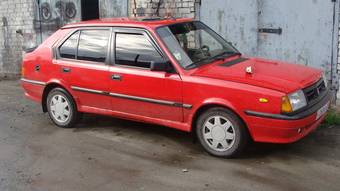1984 Volvo 340
Photo #1 - Enlarge photo 1280x720

Photo Information (Width: 340px, Height: 191px, Size: 12Kb)
Volvo 340 Problems
Reverse gear is not engaging
1984, reverse gear does not engage - how to fix
it and where do you have a parts list...
| Engine size - Displacement - Engine capacity: | 2000 cm3 |
| Transmission Gearbox - Number of speeds: | Manual |
| Fuel Type: | Gasoline |
| Drive wheels - Traction - Drivetrain: | FR or RR |
| Price (out of date): | $2470 |
1984 Volvo 340 specs, Engine size 2000cm3, Fuel type Gasoline, Drive wheels FR or RR, Transmission Gearbox Manual
|
The 300 series was unusual in having the gearbox mounted over the rear axle (which was of the De Dion tube type), with the 360 having the driveshaft enclosed in a "torque tube". The rear-mounted gearbox helped with weight distribution and handling but resulted in an unusually large transmission tunnel, especially by comparison with then-contemporary front wheel drive competitors such as the Mk. III Ford Escort and the Volkswagen Golf. Overall, the 300 series was considered heavy and unrewarding to drive but reliable and safe by the standards of its day. However, early 360GLT versions were well regarded by more enthusiastic drivers, with the unusual gearbox location ensuring good weight distribution and unusually good balance and traction. After building a series of compact cars, DAF sought a partner to bring its new larger model, codenamed P900 and intended to become the DAF 77, to market in 1970. Several manufacturers were approached, including Audi, BMW, and Volvo. Volvo was not originally interested due to the cost, but they were later persuaded by DAF's access to Renault engines. This helped Volvo expand its model line-up without the large expenditures associated with developing a new model. Building cars in the Netherlands also helped the Swedish Volvo to access the markets of the EEC, of which Sweden was then not yet a member. » Read More About Volvo 340 |


